Around the middle of 2022 I started to have problems with joints. It all commenced with a shoulder and then moved to a knee and a hip. Needless to say, the first thought was that this was a consequence of my age. We all get older every day, but one does not notice this when one is young. I am not young any more.
There was also a possibility that this was all a consequence of a Saturn transit over an awkward segment of my natal chart. This was how I comforted myself.
One of the possible explanations was also that I worked A LOT over the last couple of years, which involved a lot of sedentary position, and then the body simply decided to let me know that it was no longer ready to “carry” all of these obligations of mine and that I should introduce balance into my life.
I went to a therapy in Belgrade and that helped, but while one problem would be solved another one would appear. It all somehow calmed down while I was travelling around Thailand, which was rather funny and weird, taking into account that I carried all of my belongings in two backpacks (a big and a small ones), which was over 20 kg. But, I guess my body had no choice there and it just spontaneously built itself up. (By the way, I have found quite a rational explanation for this in neuroscience.)
Still, I promised myself while travelling there that I would go to a proper spa for therapies, with no excuse, even if I did not have any acute problems, in order to act preventively. I started to think that Banja Koviljača (Бања Ковиљача) was the right thing for me already last autumn, but back then there was no available room for me at the time which suited me. It all somehow fitted well in the first half of April and thus, as a usually active person, I decided to combine the nice and the beneficial by visiting this part of Serbia as well.
To start with, I decided to leave on the trip a day before the booking at the spa in order to have the time to visit different sites along the way.
A certain discomfort lay in the fact that the day before my trip it snowed the whole time. Admittedly, the temperature did not go below 0, but such quantity of snow could not thaw right away, so I had to count on coming across snow from time to time and the weather forecast was not great either.
Although snow in April is not an unheard of event, it is still quite a rare and unusual phenomenon, but it did not suit me at all to move my reservation, plus I had no idea when the next available slot would be. So, I packed up my things and left Belgrade by car as planned.
Here is a map that shows what I visited during this trip around the west part of Serbia:
First I followed the motorway to Ruma (Рума) and there I exited towards Šabac (Шабац). Not far from the motorway exit there is the first monument of culture I wanted to visit and that was Fišerov salaš (Фишеров салаш), Fišer’s salaš, built at the end of the 19th and the beginning of the 20th century.
In this section of the road, there are a couple of turns to the left, almost one next to the other, and I was not quite certain where to make the turn, so I ventured at the first one, thus driving to the end of the apparently dead-end street. There were some private houses there, something between holiday homes and a permanent, albeit quite small settlement. I got out of the car and luckily a man came out of a house, so I asked him about the salaš.
Not only could he explain, but he was also very kind and talkative, so we chatted a little. He told me that “during the times of Tito” the salaš was well maintained and they used to have meetings of the local community there, but now all is in ruins and not maintained. After the fine conversation, I thanked him and went by car to the next turn which is marked in the map I have created in connection with this trip.
So, Fišerov salaš, which by the way belongs to the municipality of Ruma, is seriously in ruins.
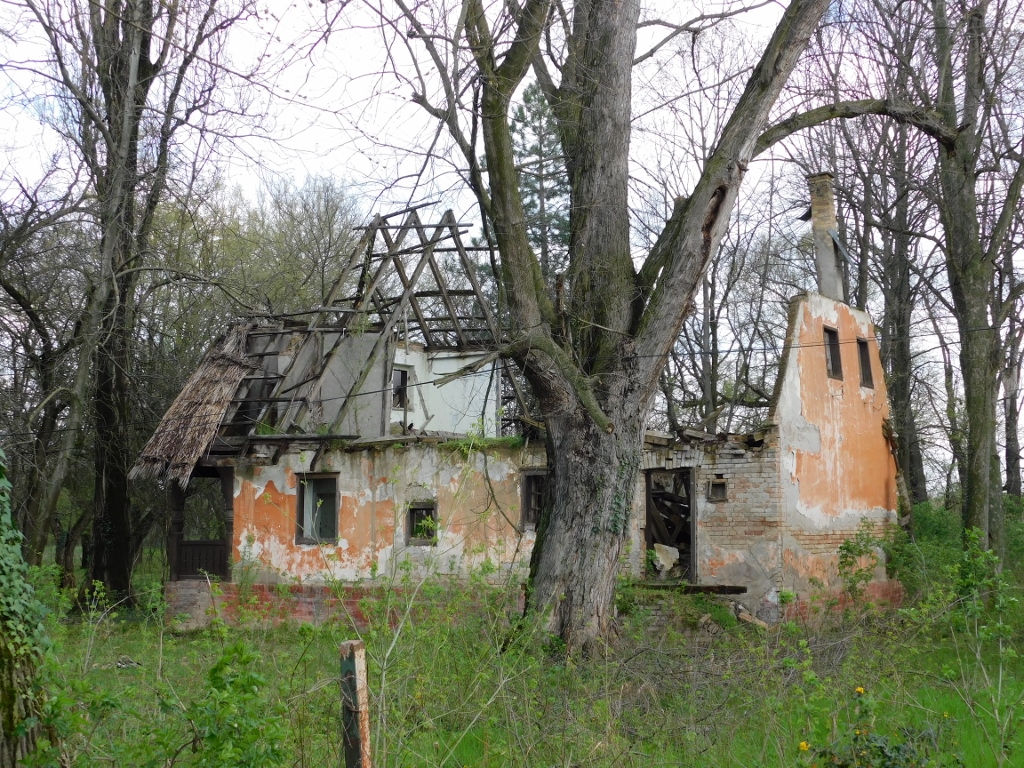 Fišerov salaš in April 2023
Fišerov salaš in April 2023
Salaš is a term denoting a rural estate with a house, auxiliary structures and the surrounding land, and it is traditionally used in the parts of the Pannonian Basin, while the word comes from Hungarian. Fišerov salaš was built as a summer house and in the official documentation it is classified as an immovable cultural property of great importance (!), although nobody would think this on the basis of its current look.
The salaš was built by the Fišer (Fischer) family and not only did they engage an architect from Czechia, they also had numerous and diverse vegetation planted around the house.
The house was built using primarily wood, as well as reeds and other traditional materials, but as much as this contributed to the beauty of the original house, this also helped in its subsequent decay. It is particularly emphasised that the house got ruined in a fire of 1966, but after that it was reconstructed and returned to its original state, including the thatched roof and all the wooden elements that it had before. Some parts of this can be seen nowadays as well.
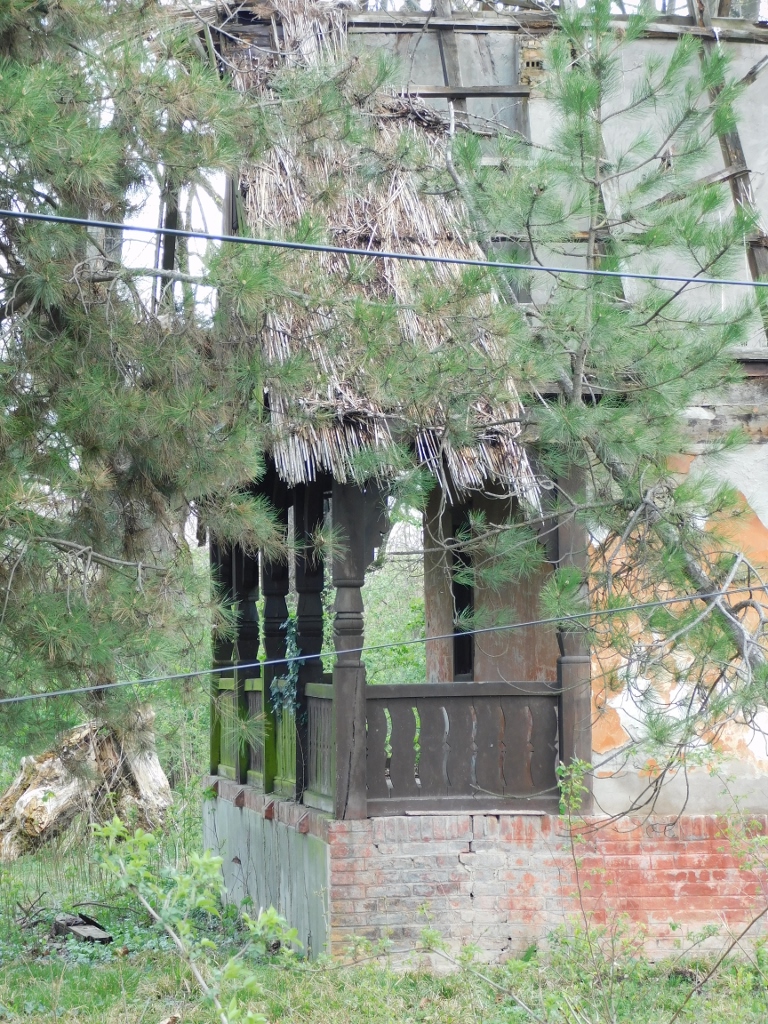 Fišerov salaš in April 2023, a detail
Fišerov salaš in April 2023, a detail
I found it interesting when at the site of the Ministry of Culture and Information of the Republic of Serbia (https://www.dvorcisrbije.rs/fiserov-salas-jarak-sremska-mitrovica-ruma/) I came across a text where they even suggest that this salaš could be turned into a restaurant after a reconstruction. I hope somebody would apply for the implementation of such a project and that the salaš may be saved while there is still something worth saving.
As for me, I continued further and soon I reached the village of Jarak (Јарак) where I first went to the Church of St. George.
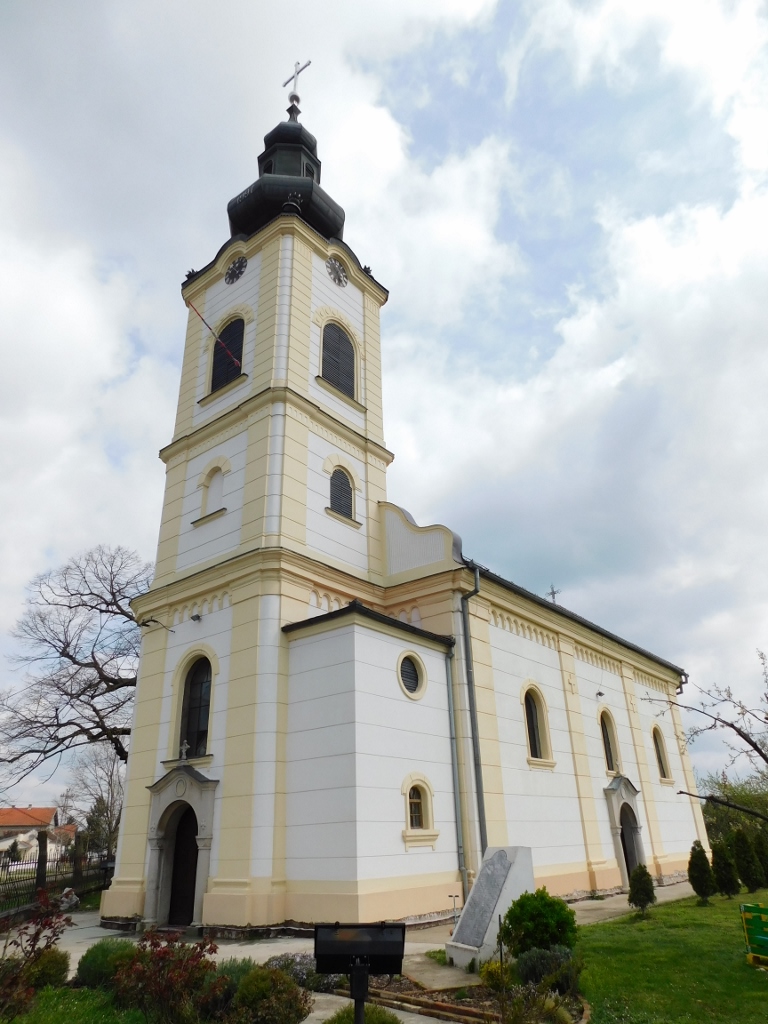 Church of St. George in Jarak
Church of St. George in Jarak
The church was built in 1779 and it is now categorised as immovable cultural property of great importance. On the front, west, side, it has a tall, tower adjacent to the rest of the edifice and at the end of the single nave there is a semi-circular altar apse. The facade has simple and very pretty and harmonious decoration.
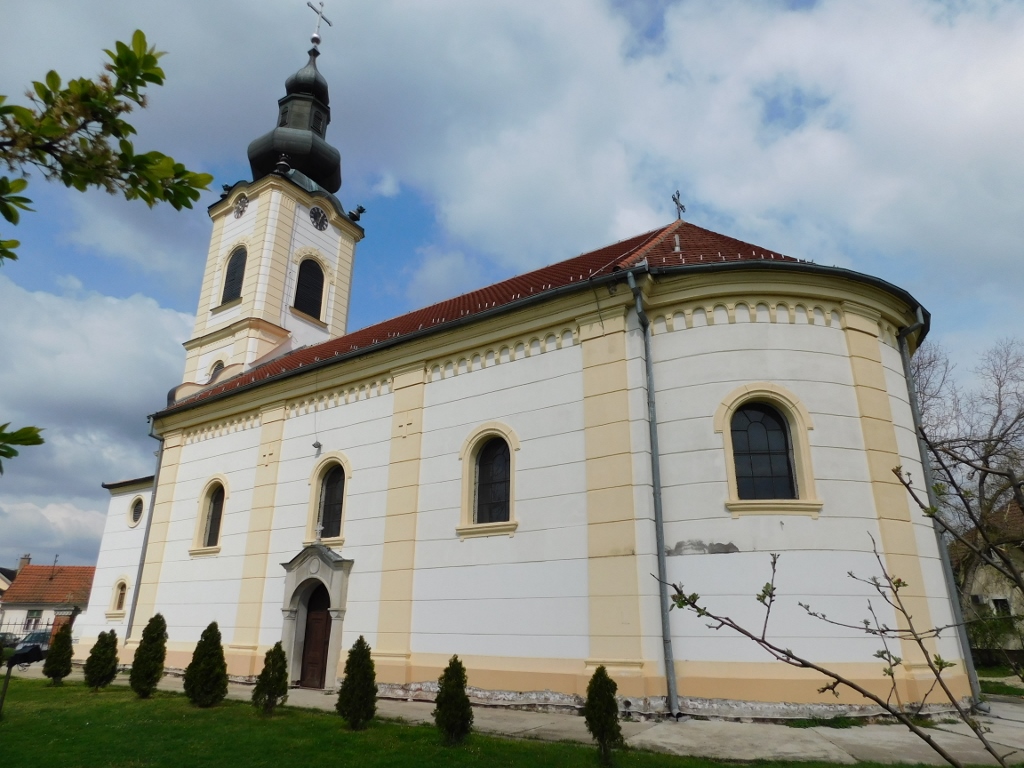 Church of St. George in Jarak
Church of St. George in Jarak
What is particularly important at this church is the exceptionally beautiful iconostasis consisting of opulent wood carvings and icons that were in 1797 painted by famous Serbian painters Jakov Orfelin and Stefan Gavrilović. At the time of my visit, there were some ongoing works that were carried out at the church, so parts of the iconostasis were taken off, but I could still see it all quite nicely.
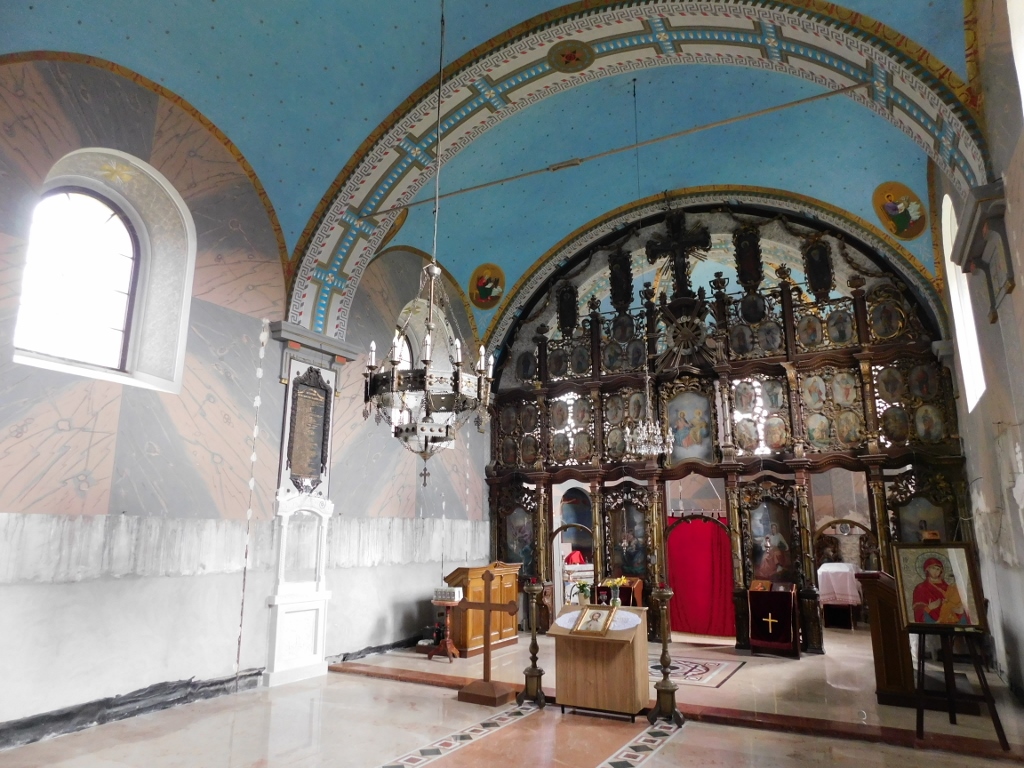 Church of St. George in Jarak, the interior
Church of St. George in Jarak, the interior
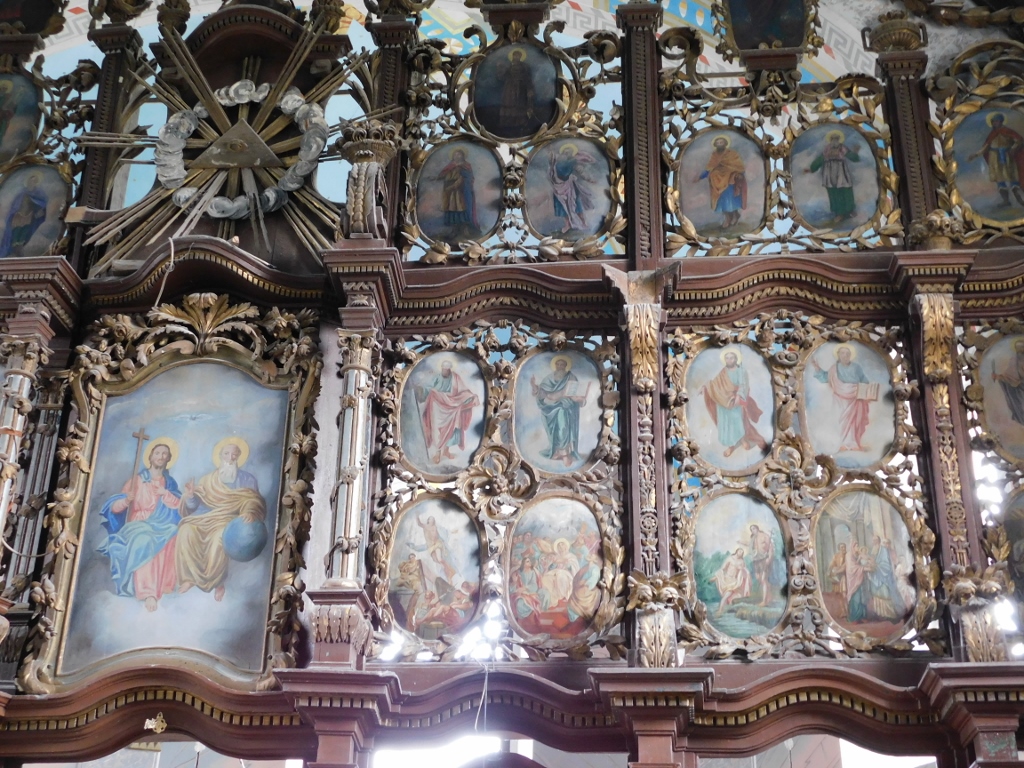 Church of St. George in Jarak, the iconostasis, a detail
Church of St. George in Jarak, the iconostasis, a detail
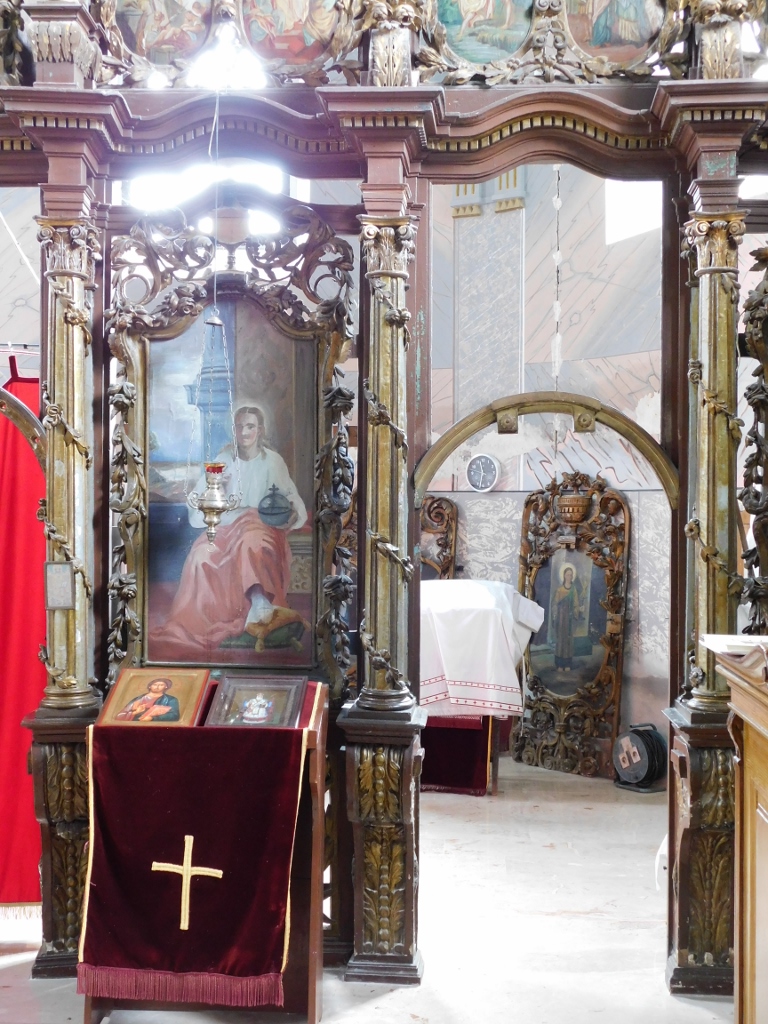 Church of St. George in Jarak, the iconostasis, a detail
Church of St. George in Jarak, the iconostasis, a detail
After the visit to the church I returned to the main road leading further towards Šabac (Шабац), but I stopped right by that crossroad. Namely, there is a memorial fountain there dedicated to some events from WWII which is considered a landmark.
This brings me to the almost “main theme” linked to the numerous monuments of culture I visited during this trip and this is the great suffering and plight of the population here both during WWI and during WWII. This will be all clearer as I write about different monuments that can be seen in the parts of west Serbia that I visited on this occasion.
The memorial fountain in Jarak was built in order to mark the following event. At the end of September 1941, the Germans and the Ustashas (members of the Croatian fascist and ultranationalist organization) set up a temporary imprisonment camp in the village of Jarak and then made some 8000 men from Šabac and the region of Mačva walk around 20 km. It was very hot and the people received nothing to refresh, so since many of them just fell beside the road because of the exhaustion, the guards killed them on the spot. Around 500 men from Šabac were killed. While facing a grave danger to their own lives, the residents of Jarak sneaked food and water (the water was particularly important) to the prisoners, thus saving many lives. The camp was very soon dismantled and the prisoners were returned to Šabac.
Twenty years later, the surviving former prisoners built this memorial fountain that has an inscription: “For the water, for the love, for the brotherhood in 1941. Inhabitants of Šabac in 1961.” The fountain was reconstructed in 1985 and nowadays it stands almost invisible by the main road from Ruma to Šabac.
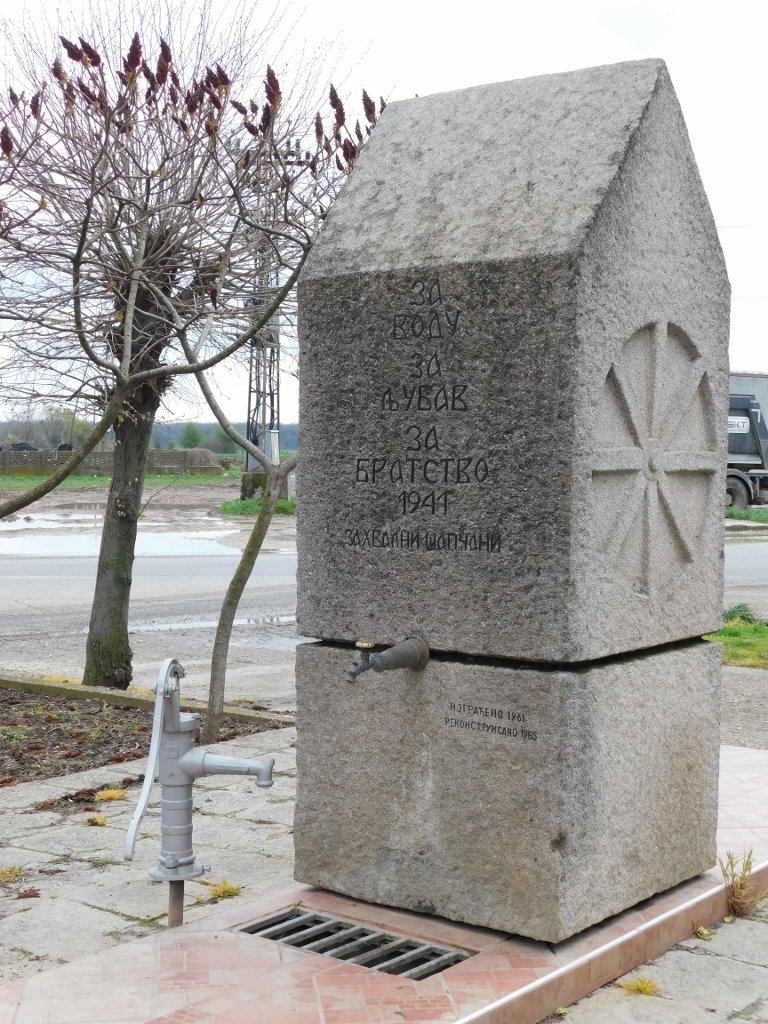 Memorial fountain in village Jarak
Memorial fountain in village Jarak
Less than 5 km farther, there is village Hrtkovci (Хртковци) in which there is a very important archaeological site Gomoglava. Having arrived in the village, I drove towards the bank of the Sava river where there is a multi-layered archaeological site in which the researchers found artefacts from the period from the 5th millennium BCE to the 15th century CE, which shows that there is continuity of human settlements already from prehistory. But, when I got to the end of the street that leads from the main road, I saw nothing that would suggest any developed archaeological site. I parked my car and got out, a little confused. Luckily, right at that moment a young woman got out of a house and got into her car, but before she left I asked her where the site was. She told me that the researchers had protected it all and said to the local people not to touch anything there. Well, that’s what she told me.
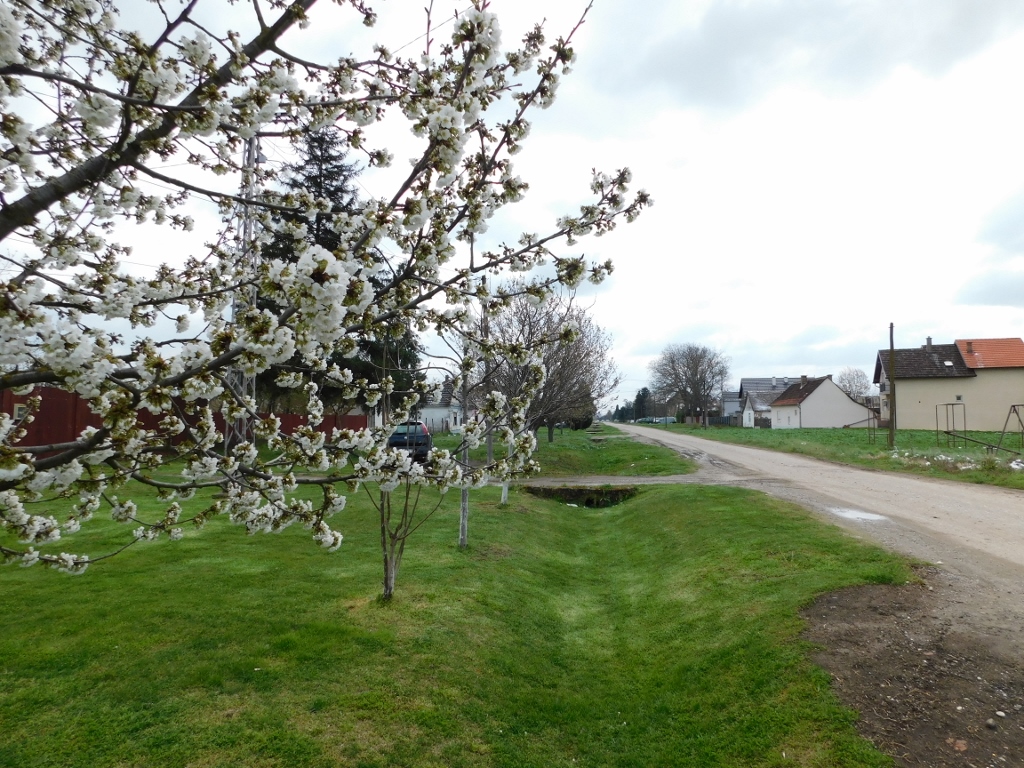 Street in Hrtkovci leading from the main road Ruma-Šabac
Street in Hrtkovci leading from the main road Ruma-Šabac
I saw a marking on the Google Maps as to where the site was, so I walked to the Sava’s bank, paying attention to the mud, because there was a dirt road by the river and since it had snowed the previous days, it was all rather filled with puddles.
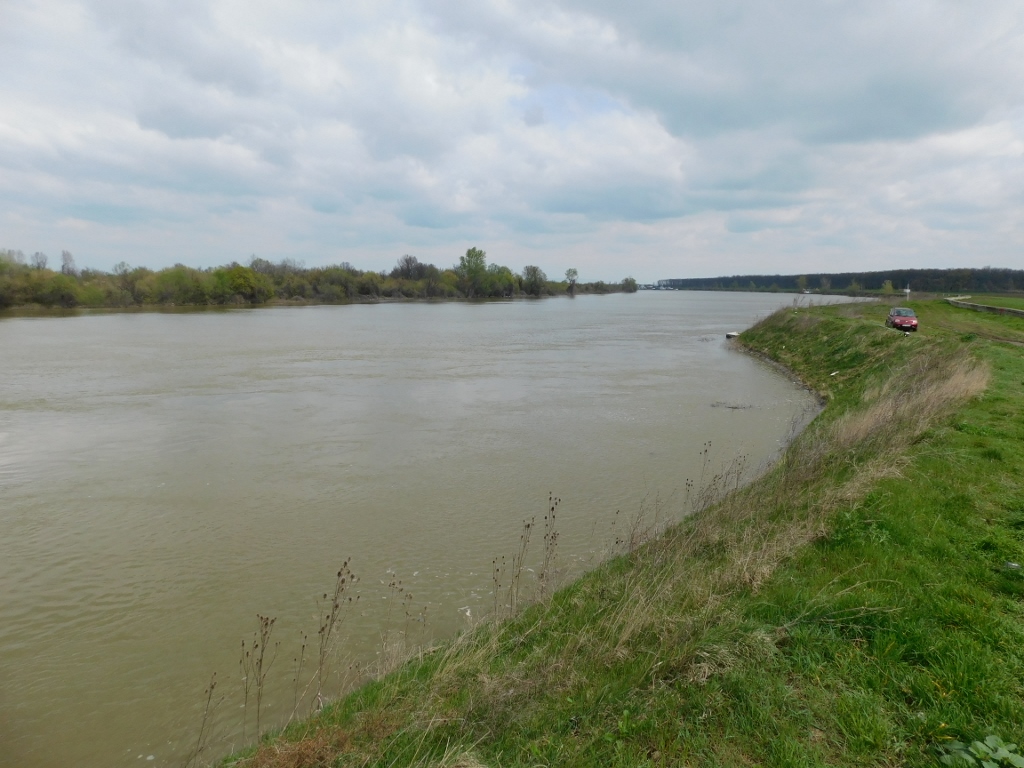 The Sava river in Hrtkovci
The Sava river in Hrtkovci
Although I did not find anything that would point at any developed archaeological site, I could read in my materials that the researches were carried out on several occasions during the 20th century, while in the second decade of the 21st century, during the underpinning of the revetment, the site was protected by gabions. I managed to notice them, so it was more or less clear where the site itself was. I went there, but apart from a memorial plaque placed there for two young men who were obviously killed in the 1999 NATO bombing, I could not discern anything else.
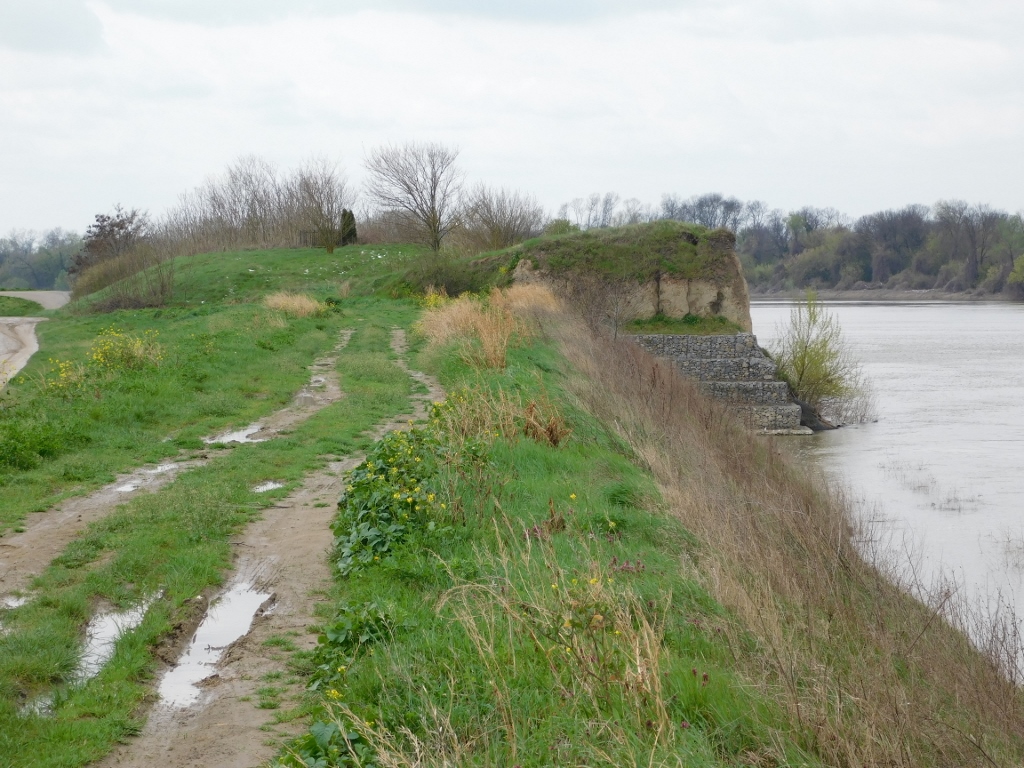 Presumed archaeological site of Gomoglava in Hrtkovci
Presumed archaeological site of Gomoglava in Hrtkovci
Since I succeeded in not stepping into any mud, I got back to the car and transferred to the centre of village Hrtkovci where I parked close to the next important monument of culture on my way and that was the Roman Catholic Church of St. Clement.
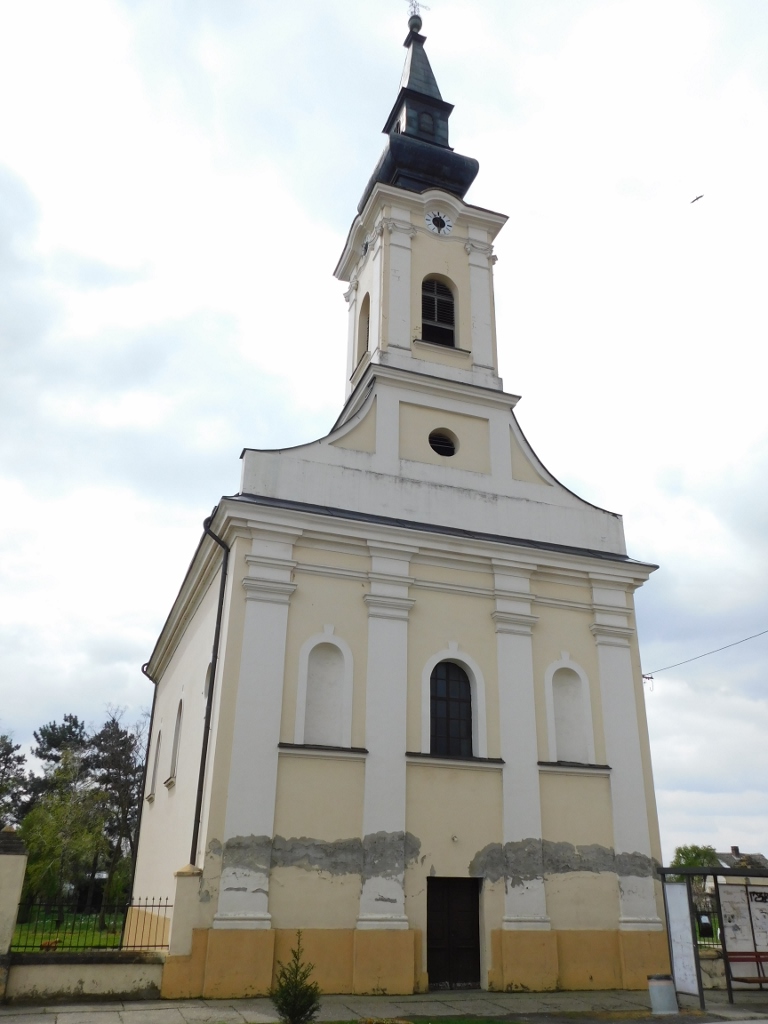 Roman Catholic Church of St. Clement in Hrtkovci
Roman Catholic Church of St. Clement in Hrtkovci
The church was built in 1824 as a single-nave building with a bell-tower rising above the front facade and a semi-circular altar apse. The facades, especially the front one, have nice and simple decoration.
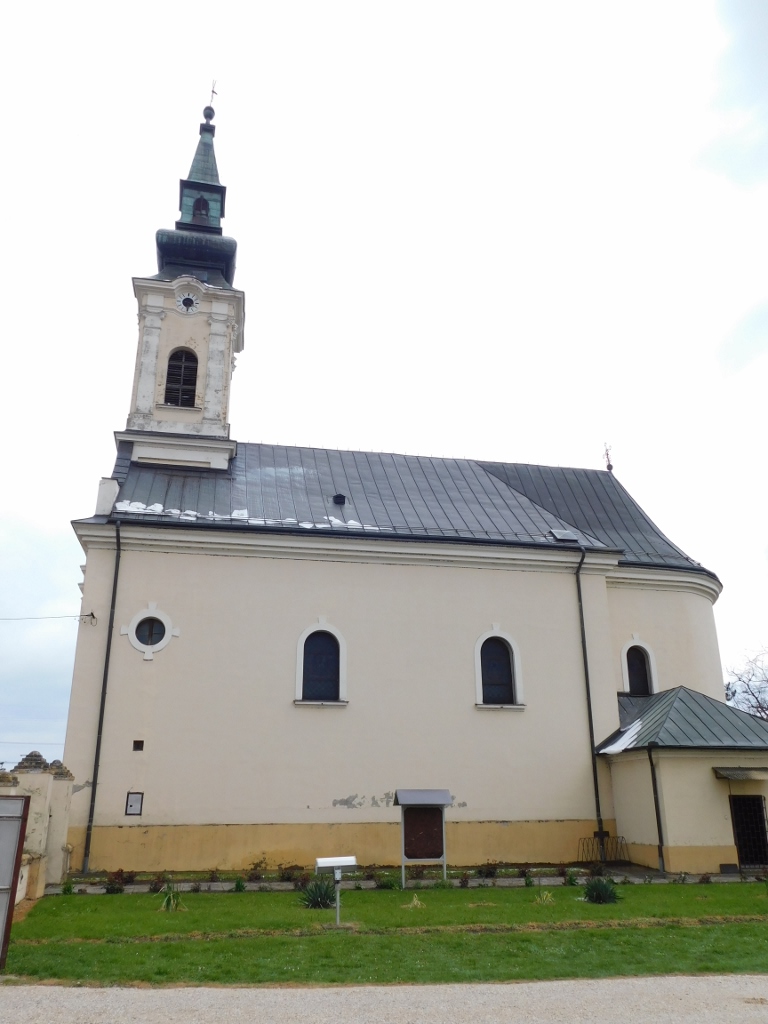 Roman Catholic Church of St. Clement in Hrtkovci
Roman Catholic Church of St. Clement in Hrtkovci
Unfortunately, the church was closed so I could not enter its interior where there are several important pieces of art, mostly from the 19th century. I walked around the churchyard a little and then I went back to the street which is a part of the main road Ruma-Šabac.
Right across the street from the Church of St. Clement, there is the Fire-Fighting House that is considered to be the most striking building in the village. Although it is in a rather bad shape (I’m thinking primarily of the broken windows), this building from 1907 is certainly quite interesting. Over time I have started to pay more attention to these fire-fighting houses or the voluntary fire-fighting societies, as they are officially called. In the past, I did not bother about them and was not even aware of their existence or importance. The first building of this kind that I have mentioned in my travel stories was the one I saw on my way to Idvor (https://www.svudapodji.com/en/idvor/). And then I started to realise that in the villages surrounded by large agricultural pieces of land it is very important to monitor lest something caught fire during the high temperature season.
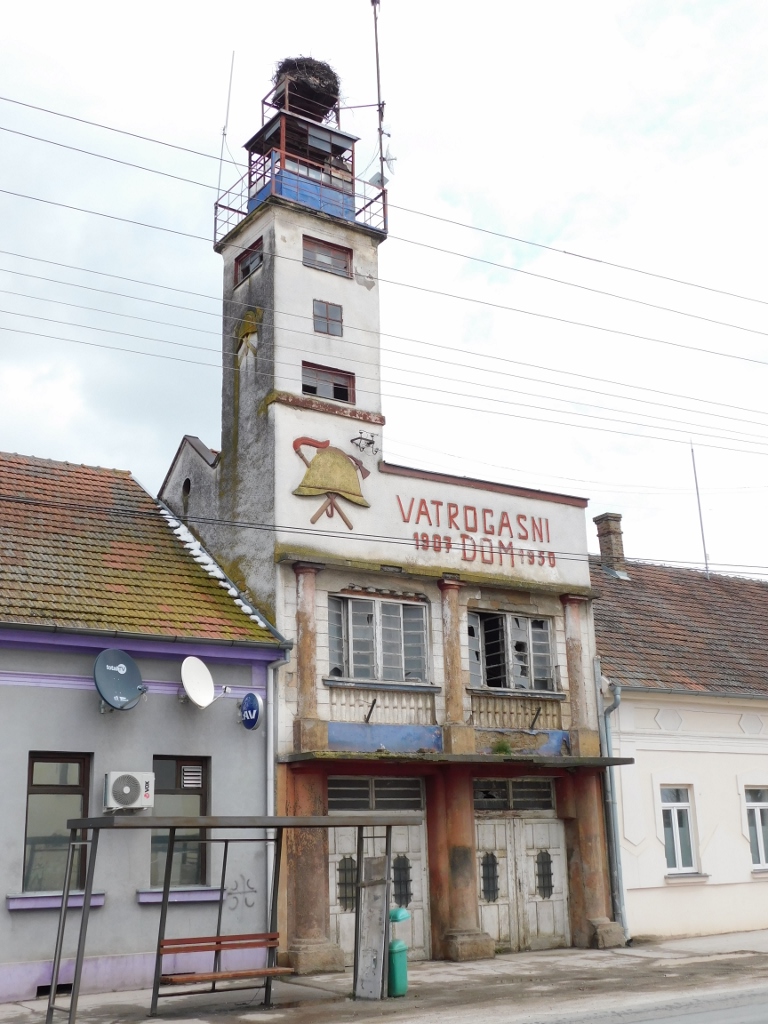 Fire-Fighting House in Hrtkovci
Fire-Fighting House in Hrtkovci
Let me also add that irrespective of the stork nest on the top of the tower I did not notice any storks here although I drove past even on my way back.
By now I started to develop a certain problem – I needed a toilet. So, I speedily headed for a local inn I noticed close to a large crossroad in Hrtkovci. I must admit that in a way I love to enter local inns in the Balkans. Even in the 21st century, me, a woman, alone... it seems a little unusual. So, when I entered the inn, there were several men standing by the bar and I stopped for a short while since it was quite dark inside, but with very strong light coming through the windows on the opposite wall, so I needed a few seconds for my eyes to adjust to the light contrast that permeated the interior. Judging by the abrupt end of the conversation, the men in the inn were surprised by my presence at that place.
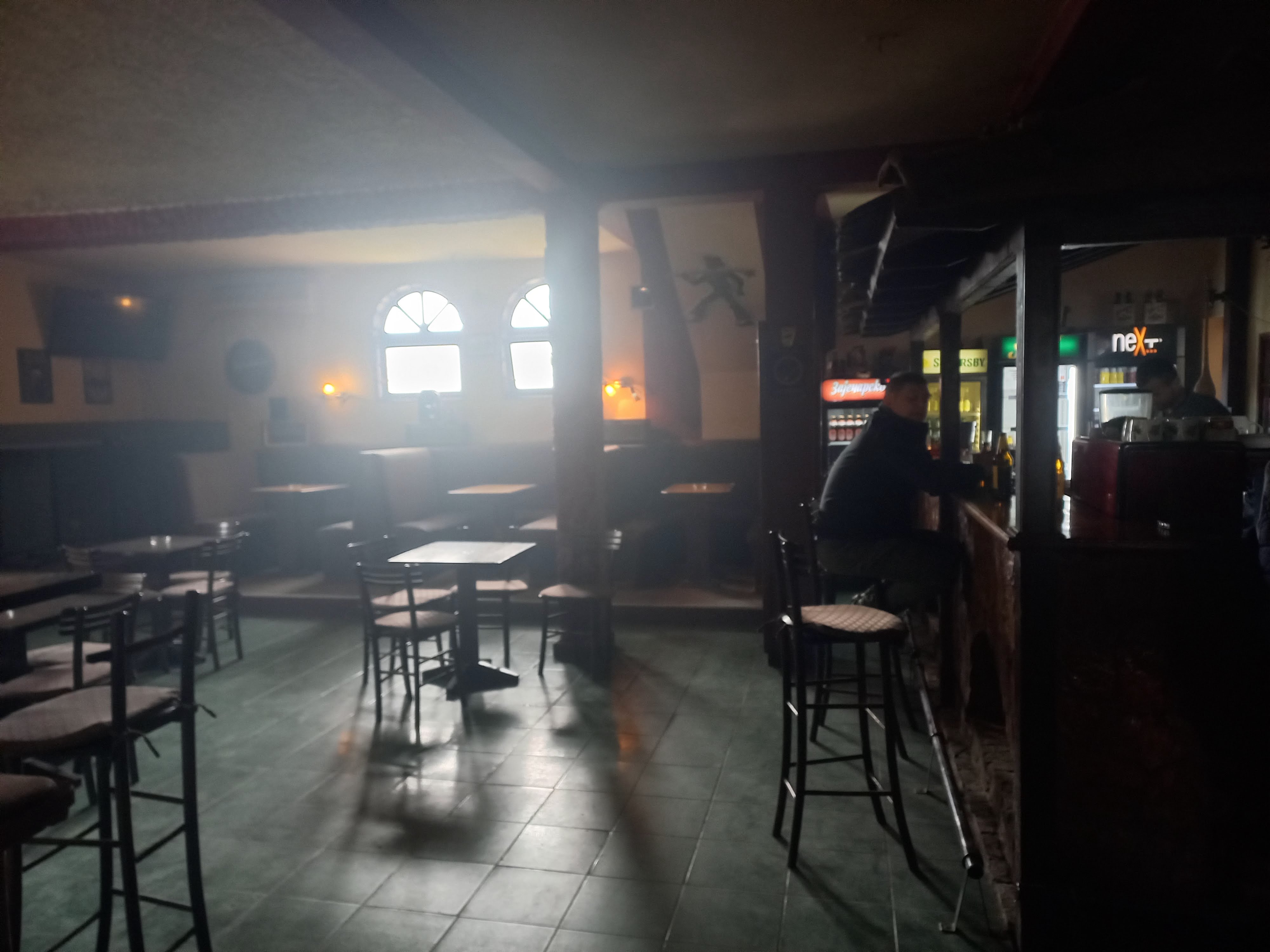 Local inn in Hrtkovci
Local inn in Hrtkovci
Of course I knew there was absolutely not a single problem with my going in (a lone woman), but this is probably rather unusual and uncommon in smaller places. In any case, I approached the bar and said to the barman that I needed a coffee and toilet. It was clear what the priority was in fact, so he showed me where the toilet was. When I returned, I could see that he did not prepare any coffee for me. He must have thought that this was just an excuse. Well, it actually was, but I still prefer to order coffee indeed in such situations. I think it is only fair.
So, I sat at the bar, but at its end and had the coffee which the barmen eventually made. And when I asked for a bill, he said there was no need and that it was “on the house.” Such a gentlemanly treatment of a woman can rarely be encountered in other places!
By the way, village Hrtkovci became “famous” at the beginning of the 1990’s because of the political problems and the war activities in neighbouring Croatia. Most of the inhabitants here were Croats and as the problems started so did the exchanges of the properties – the Serbs from Croatia exchanged their properties with the Croats from Serbia. Nowadays, Serbs are the majority population. In addition to Croats, there are also Hungarians living in the village, but they used to live here in the past as well.
Since Hrtkovci used to be considered the “most-Ustasha-inclined” village in Syrmia after WWII, this reputation led to a situation in which Vojislav Šešelj, a Serbian politician, first gave a speech in 1992 calling for coerced displacement of Croats from here, on top of which over time he built a house beside the main road leading through the village. The house has words written in large letters saying that this is his house, since he wanted in this way to continue to intimidate the local Croats. Because of the colour of the house, which I find hideous, I cannot even grasp the whole building and I always think that his intention was in fact to use ugliness to drive all the people with some taste out of the village.
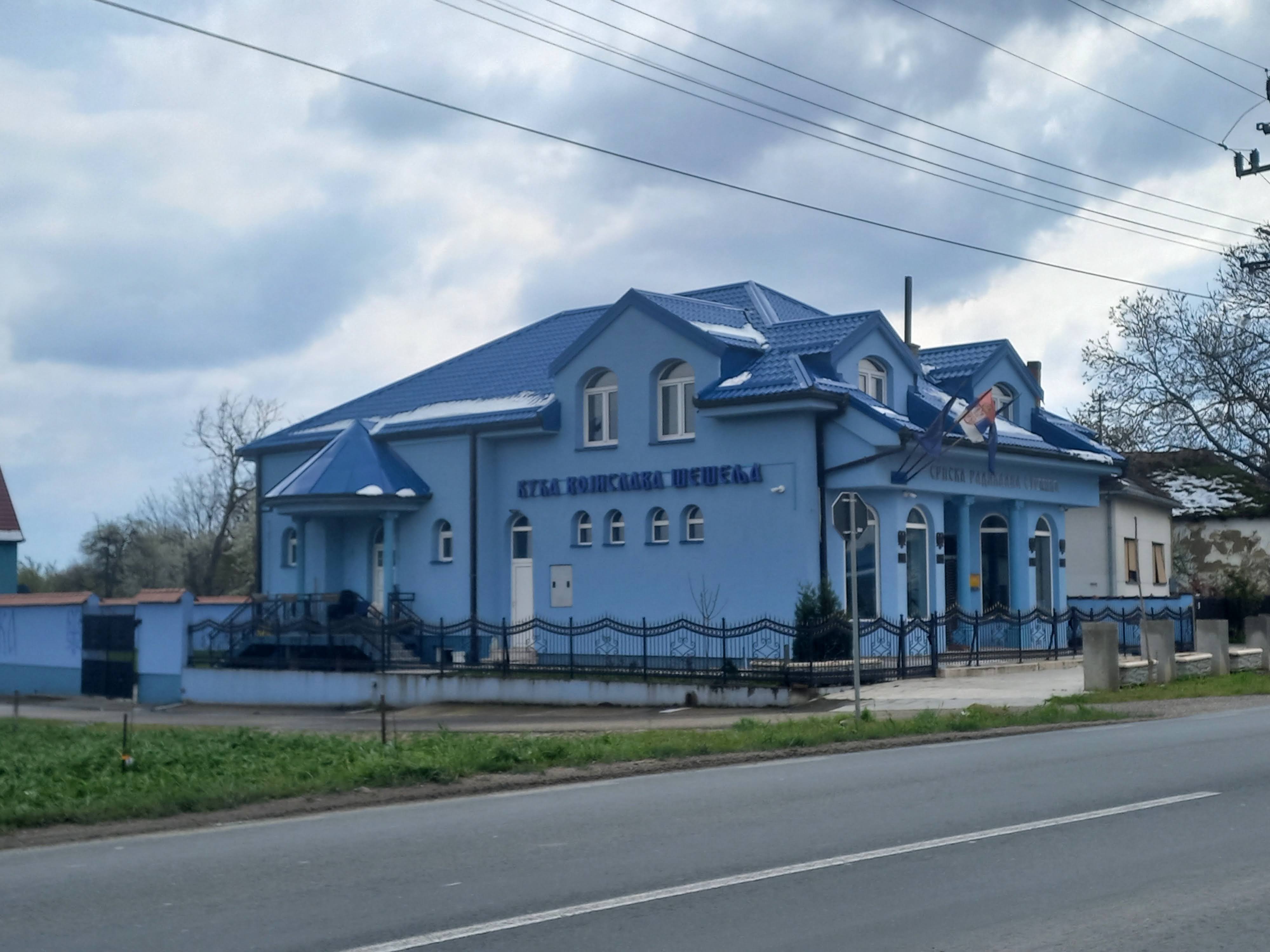 Infamous house in Hrtkovci
Infamous house in Hrtkovci
The next destination was the nearby village of Platičevo (Платичево) where I went to see the Church of Holy Archangel Gabriel from the end of the 18th century which nowadays as an active church also constitutes an immovable cultural property of great importance.
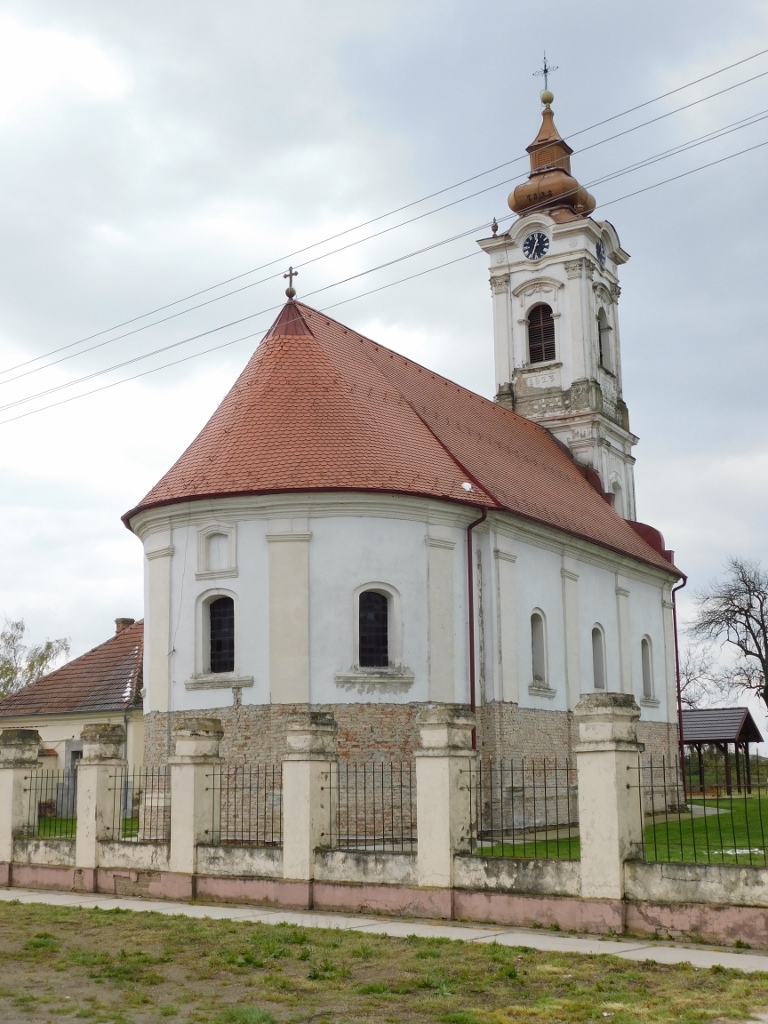 Church of Holy Archangel Gabriel in Platičevo
Church of Holy Archangel Gabriel in Platičevo
I particularly liked the bell-tower which I could notice from a certain distance, since all of this is situated in a very flat plain.
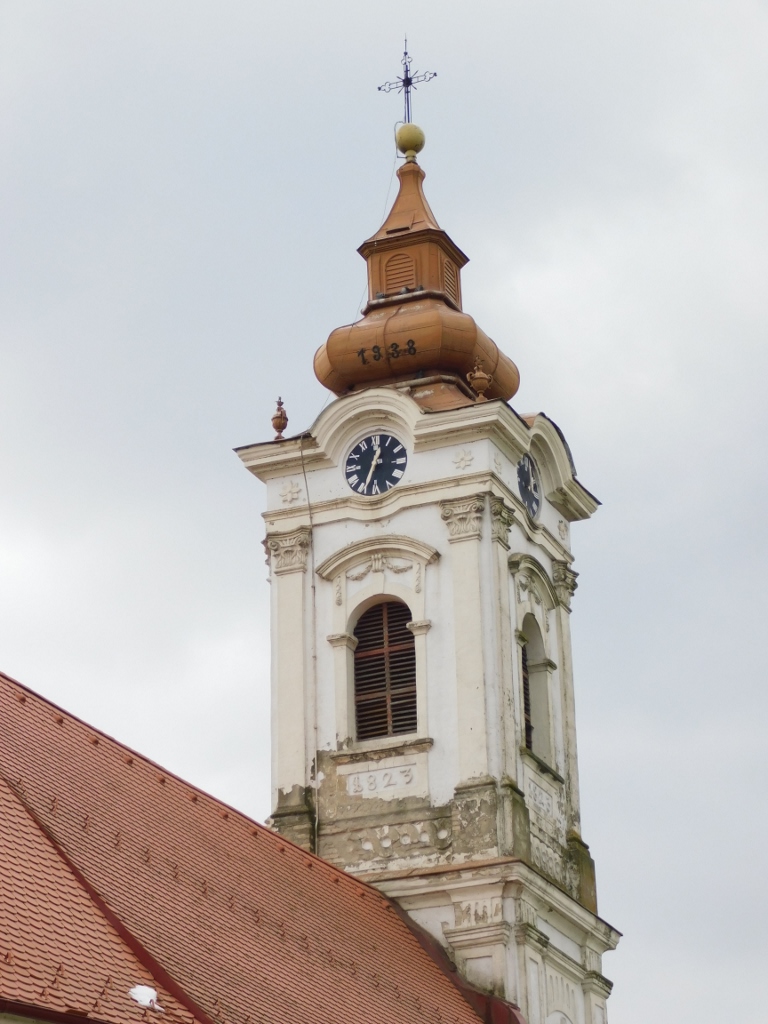 Church of Holy Archangel Gabriel in Platičevo, detalj
Church of Holy Archangel Gabriel in Platičevo, detalj
I entered the church through the south doorway above which there is a mosaic depiction of Holy Archangel Gabriel.
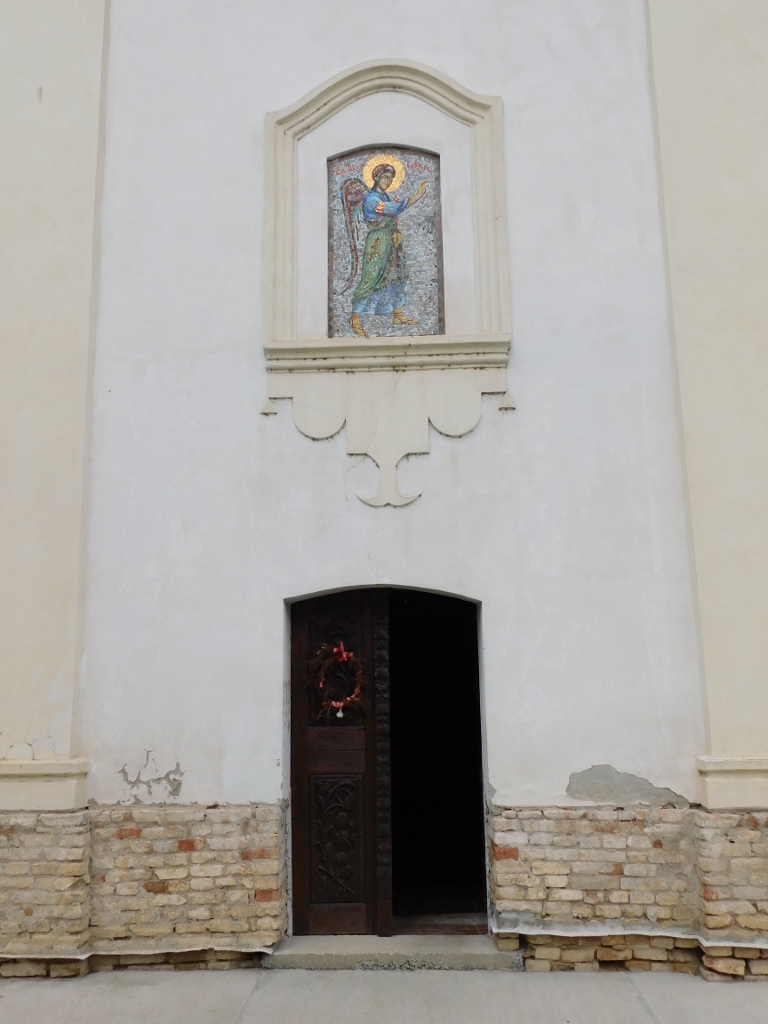 Church of Holy Archangel Gabriel in Platičevo, the south doorway
Church of Holy Archangel Gabriel in Platičevo, the south doorway
The interior is very pretty and harmonious, and the most striking element is certainly the iconostasis consisting of richly carved wooden frame and numerous icons inserted into the frame. The icons were painted in 1802 by Stefan Gavrilović and his brother Ilija. The interior is also decorated by the windows in which the multi-coloured pieces of glass are arranged in a chequer pattern.
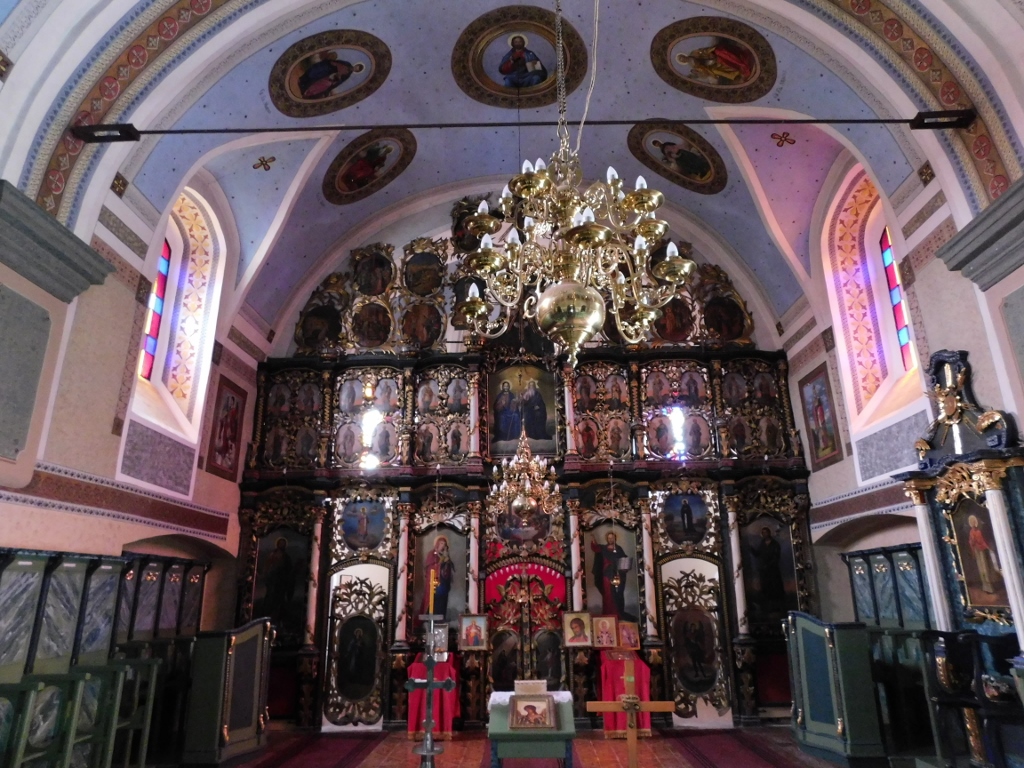 Church of Holy Archangel Gabriel in Platičevo, a detail
Church of Holy Archangel Gabriel in Platičevo, a detail
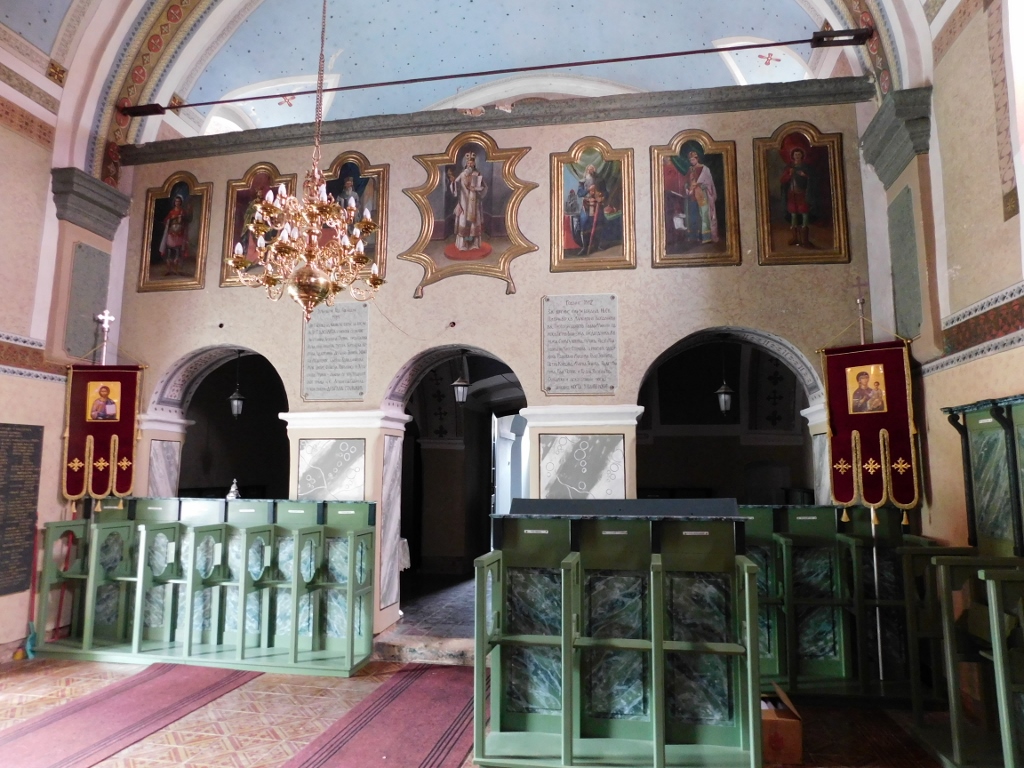 Church of Holy Archangel Gabriel in Platičevo, a detail
Church of Holy Archangel Gabriel in Platičevo, a detail
In Platičevo as well, across the church, there is the Voluntary Fire-Fighting Society, but this one is less picturesque than the one in Hrtkovci.
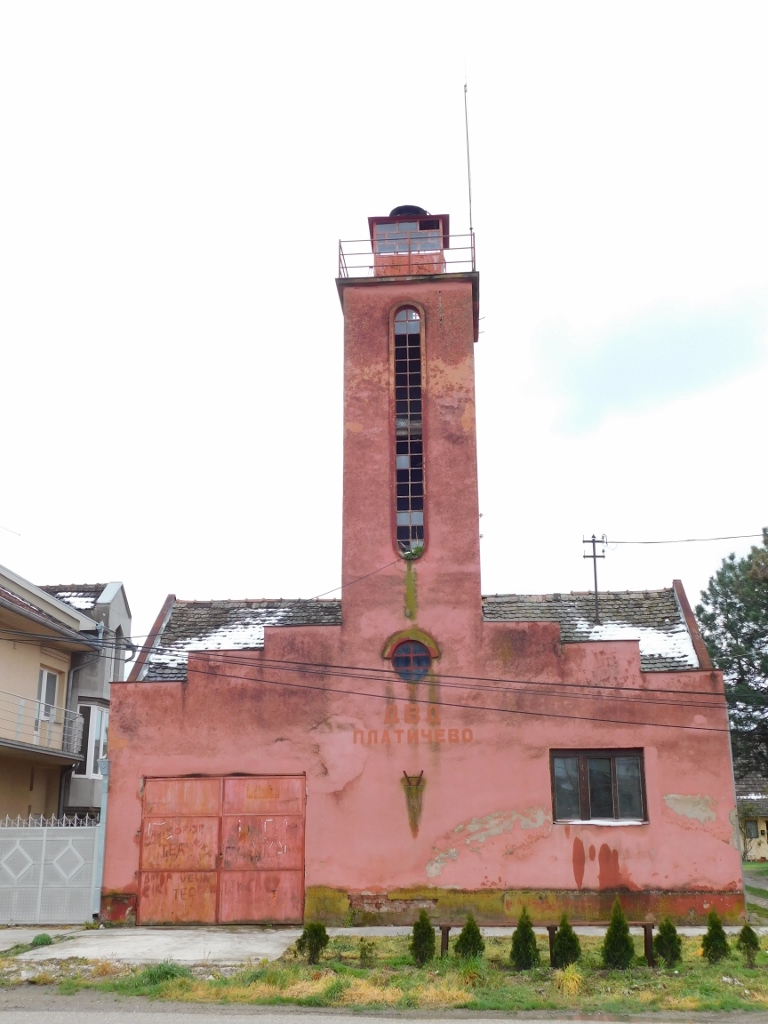 Voluntary Fire-Fighting Society in Platičevo
Voluntary Fire-Fighting Society in Platičevo
After this, I returned to the main road and drove to Šabac, but I did not enter the centre of the town. I had already decided that I should visit Šabac on another occasion and this time I just followed the main transit road that runs around the town’s core. I was going in the direction of Loznica (Лозница), but there are several routes that could be taken from here. I opted for the one going through village Jevremovac, continuing further to the south.